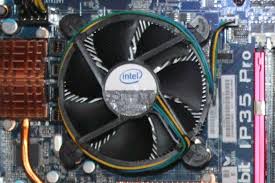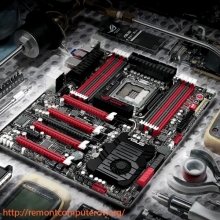How to choose a laptop? Specifications, keyboard and battery
 The operating system and screen size are not the only important parameters of the laptop. Its ability to process data is linked to the characteristics of components, autonomy largely depends on the capacity of the battery, and the usability is determined by the features of the keyboard and touchpad.
The operating system and screen size are not the only important parameters of the laptop. Its ability to process data is linked to the characteristics of components, autonomy largely depends on the capacity of the battery, and the usability is determined by the features of the keyboard and touchpad.
1. Specifications Specifications that describe the brand of the processor, the capacity of the hard drive, the amount of RAM and the type of video card, for many, are nothing more than a set of letters and numbers. But the capabilities and price of a laptop depend on them. More intense tasks, such as 3D games or editing HD video, require more expensive components. CPU. Budget laptops are usually equipped with AMD E Series or Intel Pentium processors. Such systems can easily cope with surfing the Web and communications, but serious computing or media tasks make them difficult.
The performance of Intel Atom processors also leaves much to be desired, but their advantage is low power consumption. Thrifty Core-M chips are more productive than Atom, but still inferior to the processors of the older Core i3, i5, i7 series. If performance is important to the user, you should not buy a laptop with a processor lower than Core M (for thin ultrabooks) or Core i3 (for all other mass models). If you are willing to spend more than $ 500 on a purchase, it is advisable to look for models on the Core i5. For avid gamers and demanding users, systems based on the quad-core Core i7 are suitable. RAM. Memory is called the brains of a computer. Today, even budget models are equipped with 4 GB of RAM. Do not even pay attention to smaller numbers. Systems with a memory of 6-8 GB significantly more successfully cope with multitasking and productive applications. Gamers and experienced users should look for models with 16 GB of RAM. HDD. 7200 rpm drives are faster than 5400 rpm models. 320 GB is a sufficient disk size to fit on it, among other things, several games or movies. At the same time, 500 or 750 GB will cost a little more. Flash cache Ultrabooks often come with 8 16 or 32 GB of flash memory used for caching, which improves performance. Although flash memory is slower than SSD drives, it is much cheaper and takes on part of the load when processing data and loading, freeing up a hard drive for storing information. Solid State Drives (SSD). SSDs are still inferior to traditional hard drives in terms of volume and are more expensive than the latter. However, they are much faster and do not have moving parts, which reduces the likelihood of failures. Display resolution. The more pixels, the more realistic the picture may look. Most budget laptops support a resolution of 1366 × 768 pixels. Displays 1600 × 900 or 1920 × 1080 (Full HD) show a sharper image, but the latter are about $ 150 more expensive than conventional screens. Do not forget that the higher the resolution, the more resources a laptop spends on image processing. Touch screen. For transformer laptops used in tablet mode, a touch screen is required. In other cases, you can probably do without it, given that its share in the total cost of the car is approximately $ 100-150. Graphic chip. Integrated video cards using the same memory as the processor do an excellent job with most tasks, including many games. Discrete graphics cards with their own memory demonstrate higher performance. They are chosen for video editing and for toys that are particularly resource-demanding. 2. Keyboard and touchpad The most amazing power lose a significant part of their appeal if the keyboard rattles and slides under your fingers, and the touchpad works jerkyly. When choosing a laptop, it is advisable to check in practice how soft and easy the buttons and keys work, is the touchpad prone to spontaneous responses from accidental touches when entering text. It is believed that the best keyboards and sensors offer users of Apple and Lenovo. Dell and HP are slightly behind them, but also among the leaders.
3. Battery No one likes to be tied to an electrical outlet, even if it is constantly within reach. Battery life is a parameter that you should not save on. For “home” 15-inch laptops, the minimum battery life should be at least 4 hours. If you need more mobility, you should look for models that can last 6-7 hours. The actual operating time without recharging depends on many factors, for example, on the brightness of the screen, processor load and the use of wireless networks. Therefore, do not trust the word to manufacturers who usually indicate in their specifications the battery life in the most light conditions. The real idea of the “survivability” of the battery can be obtained from independent reviews.




